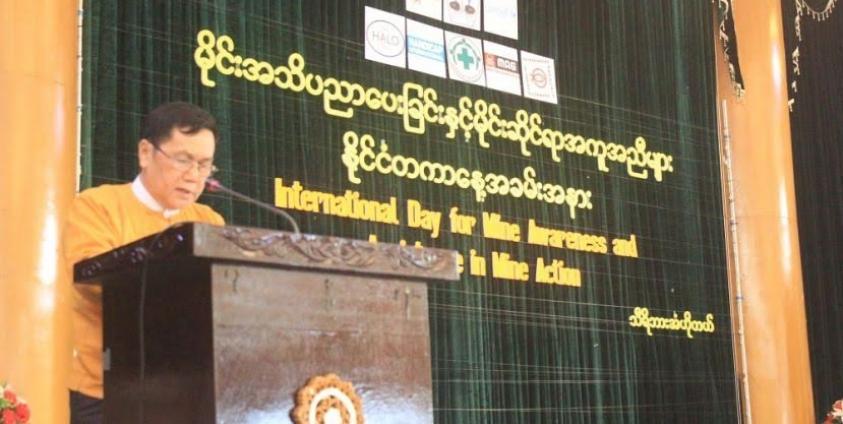Hoping to inject momentum into Myanmar’s mine clearance programs, Kayin (Karen) State officials held a workshop on April 4, International Day for Mine Awareness and Assistance in Mine Action.
“Mine clearance operations are needed in order for the public to be able to safely work on their farmland. This task can be completed quickly if everyone cooperates,” U Zaw Min, director of Kayin (Karen) State’s Social Welfare Department, said at the event at the Thiri Hpa-an Hotel.
Kayin State is one of the most heavily land mined areas of Myanmar, and has also seen one of the highest numbers of recorded victims. All seven townships are suspected hazardous areas, according to the Geneva-based Landmine & Cluster Munition Monitor.
In September 2016, Deputy Minister of Defense Major General Myint New told parliament that the Tatmadaw had started mine clearance operations in several locations in Kayin State. A victim assistance center was opened in Kawkareik township, and, later this month, the government is expected to open another center in Thandaunggyi.
“I want to let the public know that civilians can participate in mine clearance operations after they receive training from international aid organizations,” said Ko Sann Win Maung, an operations managers at demining group Halo Trust. “One of the reasons for holding this ceremony is to raise awareness of the ongoing mine-related events.”
The UN Children’s Fund (UNICEF) has pledged to spend US$5.9 million this year on landmine awareness campaigns and victims’ assistance in Myanmar.
According to the UN Secretary General’s office, landmines and explosive remnants of war caused half the child war casualties in Myanmar.
By the Landmine & Cluster Munition Monitor’s count, 31 people in Myanmar were killed and 128 were injured by landmines in 2015. From 1999 through 2015, a total of 3,693 people were recorded as victims of landmines.
Translated by Thida Linn
Edited by Laignee Barron








